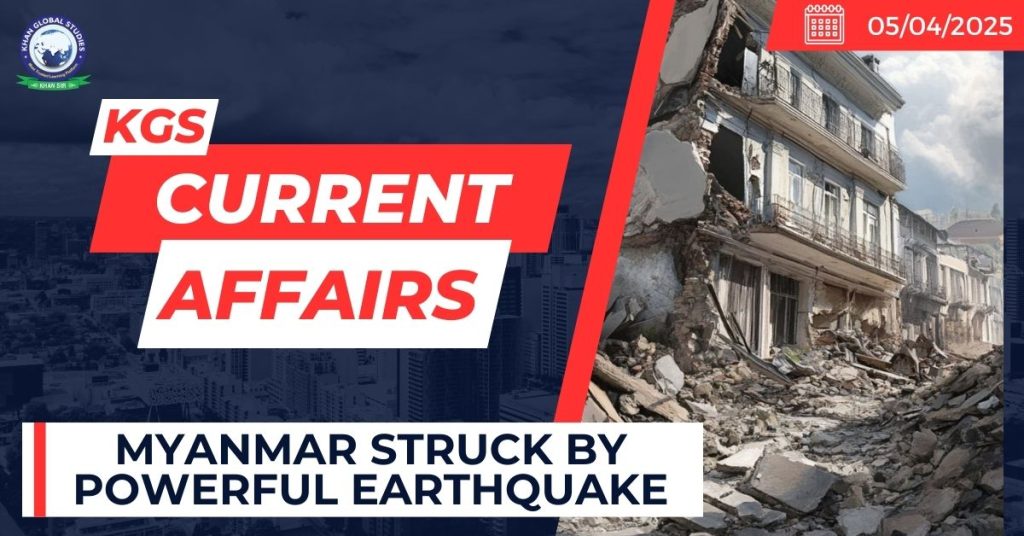Context:
Recently, a powerful Earthquake with a magnitude of 7.7 struck Myanmar on March 8, originating in central Myanmar, approximately 20 km from Mandalay, the country’s second-largest city.
More on the News
The earthquake struck near the town of Sagaing in central Myanmar, with its epicenter located near the city of Mandalay.
Mandalay is situated on the east bank of the Irrawaddy River, near the seismically active Sagaing Fault, which caused significant destruction in the southern areas.
A fault is a fracture or zone of fractures between two blocks of rock, which allows the blocks to move relative to each other, sometimes leading to earthquakes.
The Sagaing fault marks the tectonic plate boundary between the Indian plate to the west and the Eurasian plate to the east.
The Indian plate is moving north along the fault compared to the Eurasian plate

These areas sit on a thicker layer of alluvium deposited by the river, amplifying seismic energy.
It was a shallow earthquake, with a depth of just 10 km, contributing to the intensity of the shaking and widespread damage.
- Shallow earthquakes are 0 – 70 km deep.
- Intermediate earthquakes are 70 – 300 km deep.
- Deep earthquakes are 300 – 700 km deep.
This magnitude 7.7 earthquake was the strongest in the world in the last two years.
About the Earthquake
Earth’s lithosphere, the rigid outermost rocky shell of the planet, is made up of a number of tectonic plates. These have been slowly moving over the last three-four billion years, with their interaction responsible for many of the planet’s geological features.

An earthquake is caused by intense shaking of the ground, which occurs when two tectonic plates of earth suddenly slip past each other.
This sudden movement releases elastic strain energy stored within the earth, which then spreads in the form of seismic waves, causing ground shaking.
- There are two major types of seismic waves: body waves and surface waves.
The Earth’s outermost surface, called the crust, is divided into tectonic plates.
The edges of these plates are known as plate boundaries, and they consist of faults.
Tectonic plates move slowly, sliding past and bumping into one another. The rough edges of the plates often get stuck, causing tension to build. When the plates finally move enough, this tension is released as an earthquake.
The location below the earth’s surface where the earthquake starts is called the hypocenter, and the location directly above it on the surface of the earth is called the epicenter.
According to the United States Geological Survey (USGS), the Myanmar earthquake took place due to the “strike slip faulting” between the Indian and Eurasian plates, meaning these two plates rubbed sideways against each other.
Causes of Earthquakes
- Fault Zones
- Plate tectonics
- Volcanic activity
- Human Induced Earthquakes
Magnitude and Intensity
- The size of an earthquake is referred to as its magnitude, which is determined by the length of the seismic waves.
- Intensity refers to how much the ground shakes, this strength can vary depending on our location relative to the epicenter.
- Earthquakes are recorded using seismographs, which measure the vibrations caused by seismic waves.

